See Roofs in a New Light - PODCAST TRANSCRIPT
February 4, 2025 at 6:00 p.m.Editor's note: The following is the transcript of a live interview with Ryan Resides and John Kiesel of Division 7 Roofing. You can read the interview below or listen to the podcast.
Intro: Welcome to the AskARoofer podcast, where all your roofing questions find their answers. Your hosts, Megan Ellsworth and Lauren White, peel back the layers of the roofing world to reveal the knowledge, tips and FAQs you've been curious about. From shingles to skylights, metal to asphalt, we are here to demystify the system above your head. So, get ready to ask, learn and explore the fascinating world of roofing one question at a time on the AskARoofer podcast. Hello everyone. My name is Megan Ellsworth and you are listening to an AskARoofer podcast episode. I'm so excited. I have John Kiesel and Ryan here to discuss, we're talking about drones, thermal imaging, roof inspections, how do all those things work to help you get the most accurate inspection of your roof? And I think this is going to be a really interesting conversation. So, hello gentlemen, how are you?
John Kiesel: Hello, Megan. We're doing great.
Megan Ellsworth: Awesome. John, let's start with you, just have you introduce yourself and tell us a little bit about you.
John Kiesel: John Kiesel, Division 7 Roofing here in Columbus, Ohio. We perform commercial industrial roofing and also have adopted a lot of technology to assist our clients with identifying leak issues and giving them a better perspective of their overall roof condition.
Megan Ellsworth: Amazing. Ryan, who are you?
Ryan Resides: That's a good question. No, I'm just kidding. So, I work alongside John here at Division 7 Roofing. I am in charge of our estimating and operations departments. So, when it comes to integrating these technologies that he talked about and using and interpreting that data inside of our operations and estimating departments, that's my specialty. So, that's why he asked me to be here today.
Megan Ellsworth: Got it. Amazing. Okay, so what is thermal imaging and how the heck does it work?
Ryan Resides: That's a good question. That's a good question as well, Ms. Megan. So, thermal imagery is better known as infrared or IR scans, as you'll hear a lot of people call it. So, we're talking about heat energy, so it's still electromagnetic light energy, but this is in a part of the spectrum that our human eyes can't see. It has a lot of valuable information though when we are looking for heat signatures. So, we have developed, not we at Division 7, but humans have developed tools that pick up this heat energy or radiation and essentially translates it into a visual version that our minds can understand.
Oftentimes when you look at a infrared camera screen, you're going to see a depiction of hotter temperatures being a brighter color, like a red or a yellow and cooler temperatures being a cooler color. So, those are going to come in a lot of times in blues or purples, greens, things like that. These color palettes can be changed to present different contrasts. So, that's really just a setting a feature, if you will, of the cameras. But the net-net and the important part for roofing and building envelopes is we have a way that visually shows temperature differentials.
Megan Ellsworth: Okay, got it. So, you're showing the efficiency of a house where the heat is leaking and whatnot and where it's cold and where it's hot, essentially. Amazing. Okay. So, what are the main advantages to using thermal imaging drones in roofing inspections?
Ryan Resides: So, the main advantages are going to come down to things like accuracy, safety, efficiency and cost. It used to be before the world of drones, we had thermal cameras, but it always involves somebody climbing a ladder, getting up on that roof, oftentimes during dusk or even in the dark and they're walking around to capture the symmetry. The beautiful part about putting a infrared payload onto a drone is that that human now gets to stay on the ground and simply hold the controller, and as long as they are following some pretty simple rules as it applies to thermography, they are going to be able to capture just as good of imagery as we would if we were walking across the roof. So, you can imagine we're eliminating somebody having to climb and walk a roof in not so good lighting or no lighting at all and we're able to go across those areas at a much higher rate of speed.
And lastly, I want you to think about the altitude. When we are walking on a roof, most of us are only upwards of six feet tall, so you're only a few feet away. And with the drone we can go a little bit higher and we can start to gain perspective. Instead of there being just a spot here, just a spot there, when you're a hundred feet up in the air, we might be able to see that there's different patterns that are coming through in the thermal data. So, that is going to be your main advantages of attaching a thermal payload to a drone.
Megan Ellsworth: Okay. Okay. What types of roofing issues can thermal imaging reveal that might go unnoticed to the naked eye? Kind of like you said, the height difference helps, but also what are they seeing that we can't see?
John Kiesel: Yeah, so the use of technology is the concept that people have bad days just starting with technology versus people. The ability for technology to see things consistently based on how things are programmed and designed versus a person that could have a bad day and not be paying attention. There's definitely just, at that point, an advantage because you can understand how to fix an issue with some technologies versus sometimes people, that's sometimes generally impossible, but the types of issues that are going to go unnoticed is moisture underneath the roof surface that you can't detect with the human eye.
Megan Ellsworth: Got it.
John Kiesel: You can't detect air leaks that are coming through the interior of the building up through the structural deck and gaps in the insulation. You're not be able to detect those types of things by just looking, and there's sometimes there's damaged mechanical components on a roof that could be malfunctioning, producing more heat than they should be in detecting those types of issues as well is pretty valuable because we've seen mechanical units, HVAC equipment that had fan motors that were going bad and detecting this high heat. We were able to draw the attention to the property manager that this thing could cause a fire.
Megan Ellsworth: Interesting.
John Kiesel: There's a lot of things going on up there, just measuring heat and what's acceptable and what's not.
Megan Ellsworth: Interesting. Okay. Follow up question. What would a roof leak look like on a thermal scan? Would it be cold?
John Kiesel: Those are going to appear hot, believe it or not and you would think-
Megan Ellsworth: Interesting.
John Kiesel: ... water's cold, water's going to be cold, so it'll be colder than what it is outside. But in a roof assembly, water is trapped and is collecting and absorbing heat. So, as that water's heating up through the day and it cools at a lot slower rate, we go out at night and we're able to see where heat is being held in concentrated areas due to the moisture retaining that heat and not dissipating off like a dry surface would.
Megan Ellsworth: Okay, interesting. Okay. So, how effective is thermal imaging at finding these roof leaks or insulation issues? It sounds like pretty effective.
John Kiesel: Yeah, we've seen most of the time we use this as a forensic tool in most cases where issues that continue to occur causing the interior of the building to have issues with moisture. We've been out, we've repaired the things with a roof. We just cannot find anything that can let water in with a naked eye. So, a lot of times we take our drone out and we fly a roof and we can get to areas that weren't detectable and that can sometimes be a parapet wall cavity or some area where condensation collecting and forming and causing problems just with temperature changes and those types of things.
So, it's very effective, it's very accurate. Most cases, if you're into something that's very consequential, we would recommend taking some destructive testing actions and doing a physical core cut out of the roof and measuring the actual moisture content of the substrate underneath the roof just to verify severity. So, very accurate in getting you to the right place and very accurate with what the imagery is showing you, but sometimes we do need to take physical examinations as well.
Megan Ellsworth: Interesting. Okay. Got it. So, going off of that, what are some conditions where thermal imaging might not be as effective?
Ryan Resides: So, there are situations where we have what we would call an overburden on the roof. So, these would be things like a ballast PDM assembly, where you have, most of the time it's going to be smooth river rock in our part of the country. That's tough, right? Because now you have a situation where you're trying to detect this thermal energy, but you have this overburden that has a lot of thermal mass. It's giving off its own energy signatures.
So, that's going to be a situation where without the right equipment, because there are different types of infrared cameras and we won't get into all of those details, but some infrared cameras such they're called a mid-wave camera and they're very expensive, can see through there better. But your traditional IR cameras that most people are going to buy, they really have trouble with that. So, another thing that's going to happen is if you have existing surface moisture, that's a big no-no situation.
So, that's why the infrared, it can be tricky sometimes to where we've got an inch and a half of snow outside right now, this is not a good condition where I would want to try to use an infrared payload to detect things because I'm going to get inconclusive results, I'm going to get false readings all over the place. Another situation are structures that are unconditioned or the temperature inside the structure is too similar to the outside temperatures, right? Again, like we talked about at the beginning, we are looking for temperature differentials in the roofing side of things, we're not so much concerned with the exact temperature like some other use cases of infrared technology are.
When we're looking into electricians, they have some very specific rules as they are looking at different components that they may be working on and they have acceptable temperatures that things are running at. It's more about a relative difference for us. So, if there is no relative difference really to begin with, there's really nothing that's going to pick up on the camera. So, those are going to be some situations where we may need to turn to a different type of moisture detection technology or we may need to just delay the scan for better conditions.
Megan Ellsworth: Okay. I'm curious, what are some of those other options when you can't use the thermal imagery?
Ryan Resides: A couple other options that are decently common within the roofing industry are going to be things like, and John, correct me if I say this wrong, is it Tramex. I think that's the name of the company that made them. It's electrical capacitance testing. So, it's just a different technology that's essentially it's sending an electric signal down through the roof and through wet materials having a different electrical capacitance than dry materials, it's able to give you a different reading.
Other things such as nuclear testing, which is getting into some really deep science down at the atomic level. But then you can go to things as simple as moisture meters, but that also takes you into a destructive testing mode where you may actually need to penetrate the membrane. So, depending on the type of membrane weather conditions, as we talked about the conditioning or lack of conditioning within that building, we do have some other tools available to us. However, one thing to keep in mind is that the infrared scans are likely going to be the most cost effective way to get these moisture surveys completed. Some of these other options, there's no way to strap them to a drone. They only work when you are on the roof surface and walking with them. And that's one of the reasons we like to deploy the infrared technology first if possible.
Megan Ellsworth: And with the drone, like you said earlier, you're getting that height, you're seeing the whole thing full picture, plus the thermal imagery scan, which is, this is just so cool. It's cool that you can see water under a roof. That's really cool. So, how can this thermal imaging help property owners and property managers save money on repairs and energy costs, like in an apartment building?
Ryan Resides: So, as John talked about earlier with air leakage and condensation, things like that, a few things that are either common sense or maybe not be depending on your level of construction knowledge, but building code is moving more and more towards an airtight building envelope, right? And we know that if you are paying and using energy to condition air, whether that is to heat it up or cool it down and that is leaking out of the building envelope somewhere, you're wasting money, right?
Megan Ellsworth: That's so true.
Ryan Resides: Now, on certain levels, it's impossible to avoid. That's why building code discusses energy efficiency and things like U-factors and R-factors, these are talking about the thermal resistance to temperature change. On other manners, when we talk about wet materials, unfortunately when insulating materials get wet, they lose their insulating value. That what is supposed to be something that resists that thermal change is now actually turning into a conductor of that change. So, you're kind of bridging that gap. When these wet materials are getting wet, you're kind of bridging that gap between, maybe it's hot outside and it's cooler inside during the summer.
Now, you've got this wet insulation sitting in between those two. And next thing you know, your energy bills are going up a little bit here, a little bit there and it also has other effects on the structure from rust and things like that. So, really it's just a matter of awareness. And that's the beautiful part about visualizing thermal energy is we're seeing where it's going. We're seeing where it's trapped. So, just by having that awareness and then partnering with roofing professionals or HVAC professionals or even electricians for that matter, depending on what system you're working on, they're going to be able to lay out some options to get you to a more energy efficient standpoint.
Megan Ellsworth: Wow. Man, I would be scared to see a thermal skin of my house. It's just all the heat escaping.
Ryan Resides: Yeah, most of the time you're going to see it around doors and windows and things like that in the houses, which is pretty common for everybody because that's where there's a change in building composition.
Megan Ellsworth: For sure.
Ryan Resides: Yeah, especially in the older houses, you see some pretty eye-opening pictures, if you will.
Megan Ellsworth: I bet. So, quick question, quick curveball question. So, maybe a home or a property owner is listening to this right now and they're thinking, "Man, I don't think I need a new roof, but I would love to get a thermal scan of my house to see how I can make it more efficient, energy efficient." Is that something that is an option for home or building owners?
John Kiesel: I think that the use case for that is definitely possible, especially with an attic space or the availability to add that barrier between condition space and non-condition space. Generally speaking, in commercial applications, the only way to add additional insulation is to put it between the structural deck and the waterproofing membrane, which would consist of a roof replacement. For a facility that has an attic type of space that, like I said, there's that barrier between outside and inside, there's definitely the ability to add insulation and kind of correct some of those voids without interrupting the roof.
Megan Ellsworth: Okay. Interesting.
Ryan Resides: Mm-hmm. One warning sign for those situations as well, for people who live in areas where there is snowfall, about a day after a lighter snowfall, if you're buried in inches, it's not going to be as apparent, but let's say you get an inch and a half out there, look up at the roof. If you start seeing telegraphing lines coming through the snow because the snow's melting in those patterns, that's a good sign that you have some room to improve, we'll say. There's different scenarios that can present themselves, but that's a good indicator like, "Hey, maybe I should get a thermal scan completed just to understand what's going on. Because realistically, if everything is in a perfect world scenario, all that snow should be melting at the same rate because it's all one consistent temperature in there." If you're seeing hot spots of the snow melting, maybe caused to give somebody a call and come out with an infrared camera.
Megan Ellsworth: Interesting. Okay. So, this seems pretty straightforward to me, but how does using a drone for inspections make someone climbing on the roof safer? It's preventing them from getting on the roof? How is that safer?
John Kiesel: I think that Ryan alluded to earlier on about the process of flying the drone. You're on the ground in most cases and following some regulations. And being on the ground is definitely safer than being at height. But besides the obvious, there's definitely situations where most commercial roofs these days, you're going to have skylights. You're going to have other types of openings that are hard to navigate in a daytime, let alone at night, walking around paying attention to a camera distracted. And when you're on a roof that may have had prolonged leak occurrences, maybe the structural component of that roof is deteriorated and you could be walking across a roof and not notice it may be a spongy area that could lead to you falling through the roof.
So, there's just a little bit of extra concern that when you're getting up on a building, let alone in the dark. And most of the time the people that we've seen around in our area, they're going out performing these inspections by themselves. Being by yourself on a roof in the dark at... Health problems. Some other emergency kicks end up, how are you getting somebody to assist you or help you, even just in just a general health emergency. So, it's just an all around safer way to achieve what we're trying to achieve.
Megan Ellsworth: Yeah, absolutely. Especially with some of these huge apartment buildings. I mean, that's just scary also, being up there. I'd be scared. And yeah, so much safer. I think that's great. So, should a company or real estate investor request a drone thermal inspection before purchasing a building? Is that an option?
Ryan Resides: It is an option. I think that it's a tool in the tool belt that can help people quickly evaluate alongside of the RGB or visual drone imagery that we provide, a general condition assessment of the state of that roof and building envelope for that manner. So, there are things, especially with 4K, 5K imagery that we can see with our naked eye, we can give a really cost-effective assessment of, "Do you have any major problems going on here from the visual end? Tears, holes, odd things laying on the roof." But per our whole conversation here, there are some things that we just can't pick up on that could cost a potential buyer of a property tens of thousands or more. So, add that infrared scan into your due diligence package. It's something that's going to be pretty cost effective.
And especially when you're dealing with the types of commercial buildings that we specialize in working on with large distribution warehouses, big retail centers, manufacturing facilities. I know I can do that much more cost effective, safer, and if there are things that pop up, then we can make a more pointed investigation on someone's behalf rather than having to spend the money to do this the old school way, which is boots on the roof everywhere. So, it really helps you bring down some costs of the due diligence, period, operate more effectively and be more pointed where it counts.
Megan Ellsworth: Okay, interesting. That's great. So, what are some warning signs that a property manager or a building needs a thermal scan for their roof? I know we talked about the snow. That's a great tip.
John Kiesel: I'd say that when you're managing the data and the activity of your building, and if you're seeing every time it rains or five or six times a year, you're getting leak calls or leaks inside the building and there's just a consistent pattern of roof leak activity alongside of doing a preventive maintenance assessment to try to corner the reactive occasions and put them to a minimal occurrence, that's a good sign that you may want to have a thermal scan done because not all roofs are just one roof in place. So, a lot of times here in our area, there's a old or buildup asphalt roof that was put on when the building was built and somebody went back and put a new roof over top of that roof. And.
It's not unusual to find that that second roof is shot and the thing that's keeping the roof or the building dry is the buildup roof that they went over top of. So, a few of these leaks are popping up inside the building and you get up on the roof and you see that this roof is shot. And it's unbelievable that the building's not actually flooding at this point because of that buildup roof that's sealed up around all the screws and continued to perform even after it was covered up. But roof leak activity is generally the thing that is a warning sign that you should get a thermal scan on the roof.
And really as technology and best practices start to evolve and drive this, maybe make it more affordable and maybe a little bit more easily acquired, maybe do this every year on every roof, just to keep a proactive look at this. Where we sit today, it would be a little bit dramatic to have this performed on your building every single year, but I think at a minimum every two years, having this done in a proactive measure should be part of your asset management consideration.
Megan Ellsworth: Totally. I completely agree. I think that's great advice. Where do people, where can they learn more about this and find someone that has this technology near them?
John Kiesel: Well, for people in the tri-state area around Ohio, they can contact us directly.
Megan Ellsworth: Perfect.
John Kiesel: Division 7 Roofing here in Columbus. In general, I think it's a fairly easy Google to find some people that are armed with this technology. And everybody should be working with a roofer they trust, and that should be a resource to guide them in the right direction. If you ask your roofer, "Hey, I'm considering a thermal scan on my building," and your roofer you talk to has no idea what you're talking about, you might need a new roofer. It's a good sign. If your roofer doesn't know who to point you to or how to get this done for you, they might be the chuck in the truck that needs to go.
Megan Ellsworth: Yep. Completely agree. Well, gentlemen, I've learned a ton. Thank you so much for sharing this wisdom with us. Division 7 Roofing does have a directory on Roofer's Coffee Shop and askaroofer.com. So, you can find more info about them on there and also find their phone number and their website and call them if you're in the tri-state Ohio area, like John said. And gentlemen, I just can't thank you enough. Your wisdom was incredible, and I hope to chat with you again sometime soon.
John Kiesel: Anytime.
Ryan Resides: Thank you for having us, Megan. We appreciate it.
Outro: Absolutely. Absolutely. Well, everyone out there listening, thank you so much for listening. Make sure you subscribe, and we'll see you next time on the AskARoofer podcast. If your roof needs answers, subscribe now to the AskARoofer podcast. We've got your questions covered, one episode at a time. Go to askaroofer.com to submit your questions and learn more. Stay tuned and keep those questions coming.
Recommended For You

Your Guide to Choosing the Right Roof Coating - PODCAST TRANSCRIPT
Read More ...
Making the Most of Your Commercial Roofing Investment - PODCAST TRANSCRIPTION
Read More ...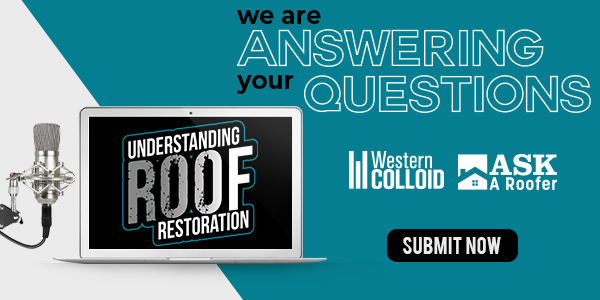
Understanding Roof Restoration Episode 1 - What is The Difference in a Roof Coating And a Roof Coating System? - PODCAST TRANSCRIPTION
Read More ...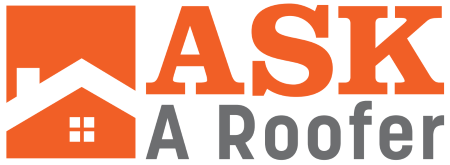
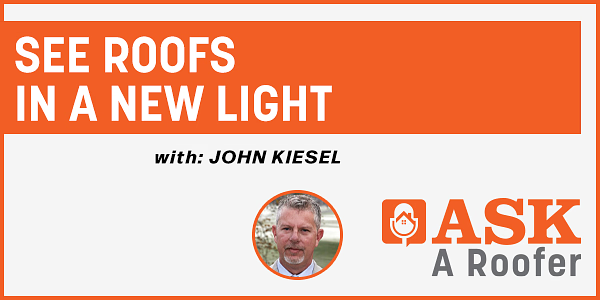


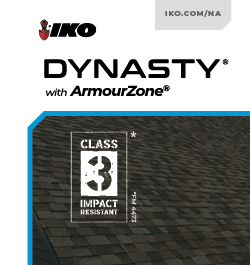

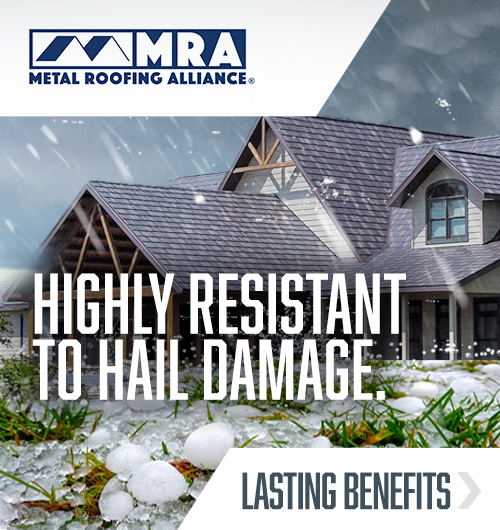

Comments
Leave a Reply
Have an account? Login to leave a comment!
Sign In